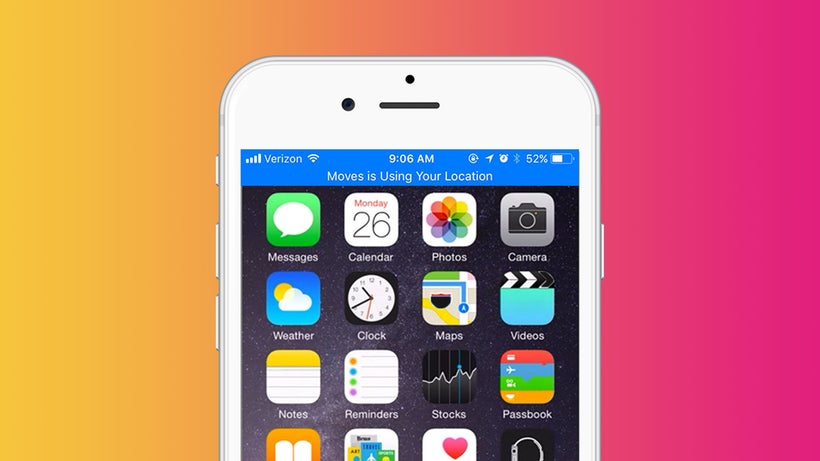
By Ian
James, General Manager, International at Verve
The arrival of Apple’s iOS 11 blue bar for location is a significant moment for
mobile marketing — telling users when apps are drawing on location data
(and raising all the concerns that change can create).
What the blue bar really represents, however, is not a blow
to location-powered campaigns but instead a battery-life spotlight that will
drive positive consumer experiences. The iOS blue bar is an opportunity for
premium media and premium in-app advertising to shine. And it’s a moment that
developers with power-draining apps — and those with unscrupulous
data-collection practices built into their apps — will not soon forget. In
short, the iOS blue bar for location will curb unnecessary data collection, and it will be good for
our industry.
One data-driven moment at a time, this is how you win in
the location-data space … you don’t need a blue bar to tell you that.
Every time a new feature like this one comes along, however,
it’s also an opportunity to assess how mobile marketing is evolving in the
location-powered space. With investments set to reach $32B by 2021 for location-derived advertising, it’s
crucial to unpack what our technology can actually do — highlighting progress
and also where we need to grow even further. Consider the following four
points; each goes to the heart of where location data can take us, and what it
takes to get location data and best outcomes right.
- Foot
Traffic: At the core of what location-powered marketing promises
is accurate and precise data about foot traffic. Beginning your journey
with location data derived from the device — via in-app software
development kits (SDKs), for example — enables marketers and
advertisers to achieve a realistic measurement down to 5–10 meters. That’s
the real-world case, right now, no myths about it. But it also comes with
Remember, it’s not the SDK that’s driving the accuracy, it’s the ability
to access increasingly precise sources of location data, like on-site
beacons and Wi-Fi. The SDK must exist within a robust network of signals.
- Points
of Interest and Other Data: Signals and data, along with multiple
data sets coming together, are key to our continued growth. Beyond the
device, for example, it’s true that point-of-interest (POI) data is
important to every mobile-marketing campaign. It’s also true that keeping
POI databases accurate and up-to-date is a challenge — stores change
and buildings often contain multiple businesses on a vertical as well a
horizontal plane (read our recent white paper for a deeper look at vertical
location). The good news is that POI, CRM, beacon, and household data are
converging, industrywide. As we promote and develop that convergence,
powerful options such as the SDK will further make the case for
location-powered marketing.
- Dwell
Time: It’s not enough to know a consumer visited your location,
you want to know how long they stayed — ultimately tying visits to
purchases. To measure dwell-time you need the precise, consistent signals
that can be collected through an SDK (again, it’s the conduit to
background data, beacons, Wi-Fi, etc.). That being said, there are other
solutions for finding dwell-time outside the location-data space —
video-based solutions exist and there are metrics not attached to SDK or
ad-serving — but SDKs are the only way to track dwell-time using mobile
location data. Clearly, we’re looking at future that focuses on this
approach.
- The
Future of Beacons: There’s a lot to say about the history and
future of beacons. We can start with this: the old story of pushing
notifications and offers to consumers when in proximity to beacons has
evolved. But advanced leaders in the location-data space approach beacons
along the lines of measurement and strategy. Knowing the beacon-supplied
frequency of consumer visits to a location, for example, gives advertisers
the ability to measure the effectiveness of ads served and then develop
thoughtful ways to engage consumers at other times.
In the end,
it’s all about the audience. Location data is a piece of an audience-profile
approach that enables marketers and brands to target with accuracy and
precision. The best way to get location-rich data that is both reliable and
powerful is to become as closely linked to each device — and each user —
as possible. Going back to our list above, it’s repeatedly the case that the
best way to get closely linked to users — and their devices — is to focus
on the SDK.
Furthermore,
thanks to the SDK and the learnings we can extract from the data it provides,
we can even improve the future of open exchange data. Exchanges are full of
noisy and low-quality data. But we can take benchmarks such as time-stamp and
horizontal accuracy and apply them to exchange data, cleaning it up and scoring
it to ensure advertisers are getting the best of both worlds — on-device
and open exchange.
Blue bars
and other notifications will come, and some will go, but one certainty in our
industry is that the best-quality location data will always drive the most
meaningful results. Meaningful results, for advertisers, publishers, and
marketers, means engaging users with relevance. One data-driven moment at a
time, this is how you win in the location-data space … you don’t need a blue
bar to tell you that.
No comments:
Post a Comment